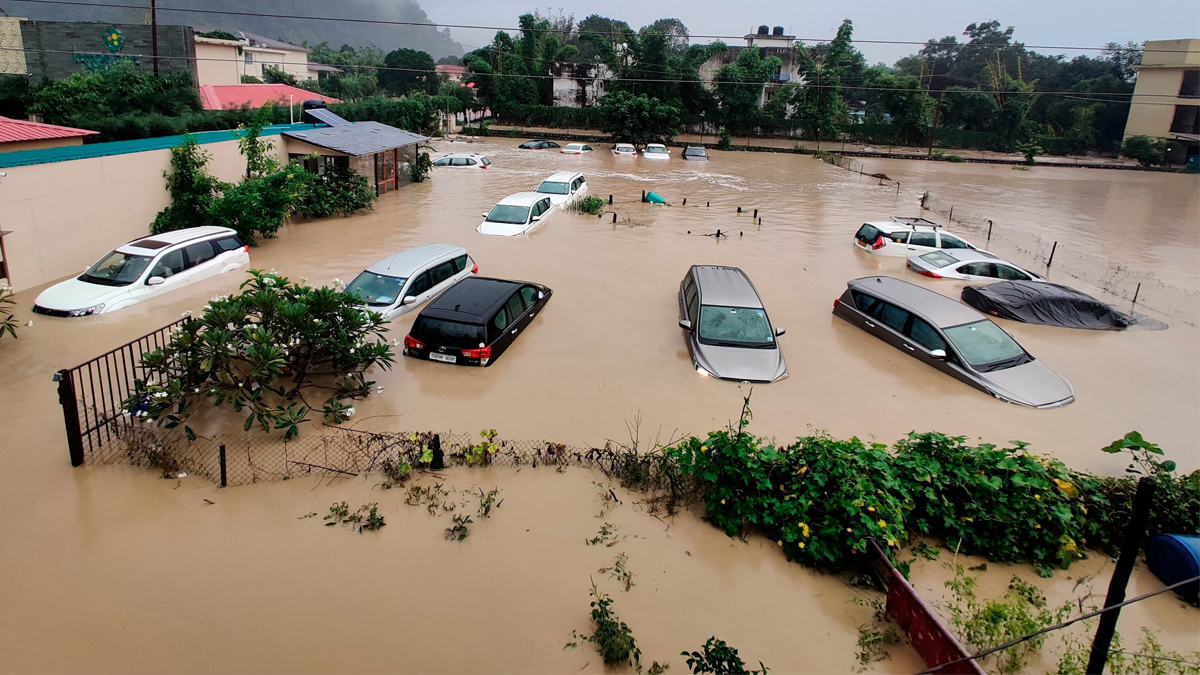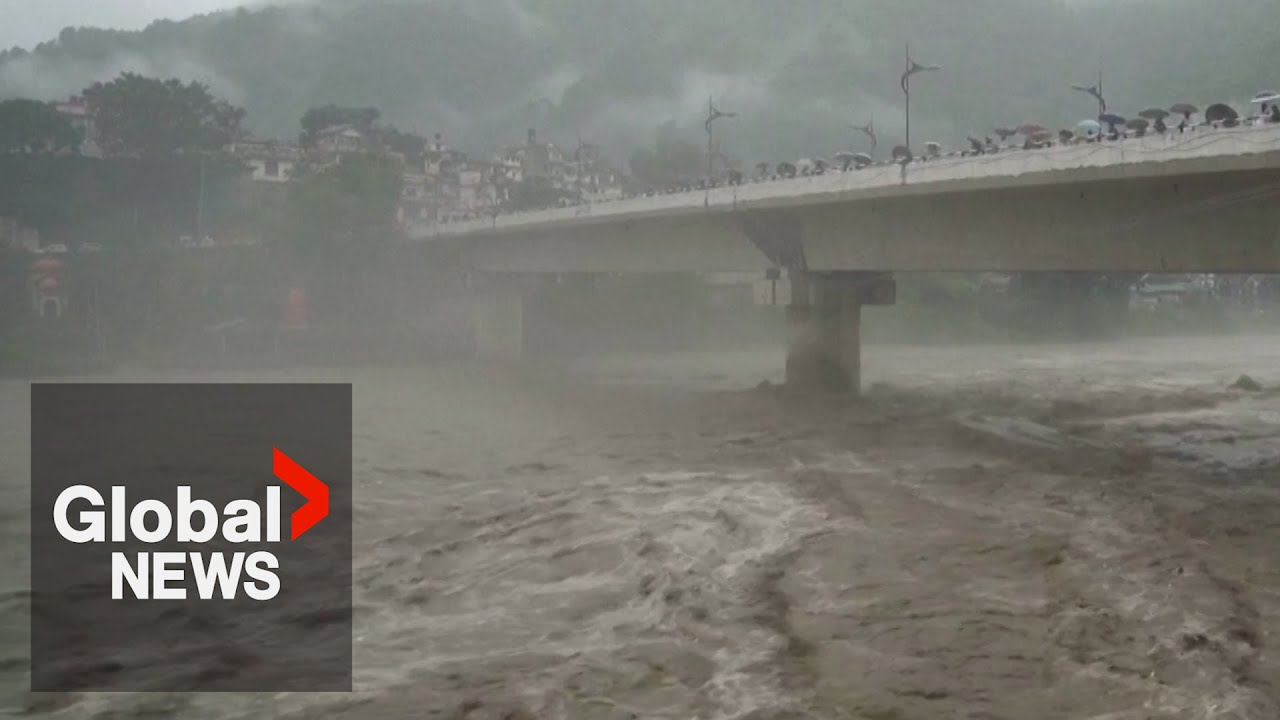Deadly Floods Ravage Northern India, New Delhi Records Wettest July Day In Over 40 Years
Heavy rains unleashed devastating floods in northern India over the weekend, resulting in flash floods and landslides as New Delhi records wettest July day in over 40 years.
Author:Paolo ReynaReviewer:Hajra ShannonJul 11, 202355.2K Shares936.9K Views

Heavy rains unleashed devastating floods in northern India over the weekend, resulting in flash floods and landslides as New Delhi records wettest July day in over 40 years.
According to CNNaffiliate CNN-News18, at least 22 people lost their lives, with the majority of the fatalities occurring in the northern state of Himachal Pradesh.
New Delhi's Wettest July Day In Over Four Decades
The Indian capital, New Delhi, experienced an extraordinary deluge, making it the wettest July day in more than 40 years.
The Indian Meteorological Department reported that New Delhi received a staggering 153 millimeters (6 inches) of rain on Sunday, marking an unprecedented level of rainfall for the city since 1982.
In response to the severe weather conditions, the Indian Meteorological Department issued red alerts, indicating the highest threat level, for several northern states including Himachal Pradesh, Uttarakhand, Punjab, and Haryana.
Landslide warnings were also issued for Uttarakhand and Himachal Pradesh, urging residents to exercise caution.

India floods: Annual monsoon rains cause heavy flooding in parts of northern region
Safety Measures Urged As Rescue Efforts Persist
Himachal Pradesh Chief Minister Sukhvinder Singh Sukhu appealed to residents to remain indoors and stay safe. With travel conditions severely impacted, schools and colleges were closed to ensure the safety of students and staff.
“„I appeal to all to stay safe and stay inside their houses. Schools and colleges have also been closed as there is no way to travel.- Himachal Pradesh Chief Minister Sukhvinder Singh Sukhu
Ongoing rescue operations are underway to assist those stranded by the floods, including the recent successful rescue of 27 individuals from a flooded hotel in the Kullu district near the overflowing Beas River.
The Meteorological Department predicts "isolated heavy to very heavy rainfall" in the northern regions of Punjab, Haryana, Chandigarh, Delhi, Rajasthan, and Uttar Pradesh over the next five days, starting from Monday.
The persistent downpours have led to school closures in various areas, including Uttar Pradesh and New Delhi.
In response to the torrential rains and warnings from the Meteorological Department, New Delhi's Chief Minister Arvind Kejriwal ordered the closure of schools, prioritizing the safety of students and staff.
Similarly, authorities in Chandigarh advised schools to remain closed until Tuesday, with a focus on ensuring the safety and security of all individuals present.
Southwest of Delhi, in the satellite city of Gurugram, schools were closed due to the significant rainfall and concerns of potential flooding, falling trees, and other disruptions.
Monsoon Season Challenges Amid Climate Crisis
India is currently experiencing monsoon season, which typically spans from April to September. The recent floods add to the challenges faced during this period.
Last month, severe flooding affected nearly half a million people in northeast India, exacerbated by heavy rain and cyclone Biparjoy hitting the west coast.
These incidents underscore the vulnerability of India's densely populated regions to the impacts of the climate crisis. Additionally, blistering heatwaves experienced this summer further highlight the extreme vulnerability of the nation's residents.
Final Words
The devastating floods in northern India and the record-breaking rainfall in New Delhi highlight the immense challenges posed by the monsoon season and the ongoing climate crisis.
With flash floods, landslides, and loss of life, the affected regions are grappling with the immediate aftermath of the torrential rains.
As rescue efforts continue and safety measures are implemented, the forecast of continued heavy rainfall in the coming days raises concerns for the well-being of the population.
These events serve as a reminder of the vulnerability of India's densely populated areas to the impacts of extreme weather events, underscoring the urgent need for climate resilience and mitigation measures.

Paolo Reyna
Author
Paolo Reyna is a writer and storyteller with a wide range of interests. He graduated from New York University with a Bachelor of Arts in Journalism and Media Studies.
Paolo enjoys writing about celebrity culture, gaming, visual arts, and events. He has a keen eye for trends in popular culture and an enthusiasm for exploring new ideas. Paolo's writing aims to inform and entertain while providing fresh perspectives on the topics that interest him most.
In his free time, he loves to travel, watch films, read books, and socialize with friends.

Hajra Shannon
Reviewer
Hajra Shannona is a highly experienced journalist with over 9 years of expertise in news writing, investigative reporting, and political analysis.
She holds a Bachelor's degree in Journalism from Columbia University and has contributed to reputable publications focusing on global affairs, human rights, and environmental sustainability.
Hajra's authoritative voice and trustworthy reporting reflect her commitment to delivering insightful news content.
Beyond journalism, she enjoys exploring new cultures through travel and pursuing outdoor photography
Latest Articles
Popular Articles